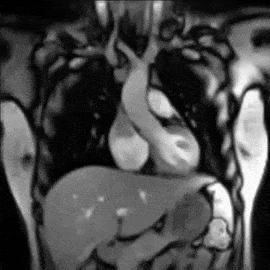Breath, Visceral Slide & Pelvic Floor Health
In Module 5 of the Free The Belly, abdominal scars & restrictions course, I demonstrate the importance of diaphragmatic circumference breathing and how to align your body so that circumference breathing happens reflexively. Check out this video demonstrating the considerable glide of the internal organs with a full breath. That’s 30,000 massages to the viscera every day, just from proper breathing! This visceral slide helps the organs function properly and reduces the chances of abdominal adhesions forming. It’s also my favorite pelvic floor tip!
Here’s another cool video that shows how full inhalations elastically load the pelvic floor vs shallow upper chest breathing. This is a good thing! As you breathe in, the pelvic floor elastically loads, and as you exhale the pelvic floor and the uterus lift slightly due to the attractive force of the diaphragm. It’s like a built-in sump-pump aiding in the fluid dynamics of the pelvis.
My Favorite tip for Pelvic Floor Health
Somehow we got it into heads that the pelvic floor muscles only work and are strongest when they are concentrically contracting, so people have a tendency to hold too much tension in the pelvic floor. Eccentric contraction offers strength and stability while lengthening.
An eccentric contraction is the motion of an active muscle while it is lengthening under load.
A concentric contraction is a type of muscle activation that causes tension on muscles as they shorten.
The respiratory diaphragm and the pelvic floor work together for stability, strength, visceral mobility, and fluid dynamics. How we breathe matters! In addition to abdominal massage, I also teach pelvic floor exercises and using the breath to keep the organs and pelvic floor functioning properly in my online abdominal courses.









